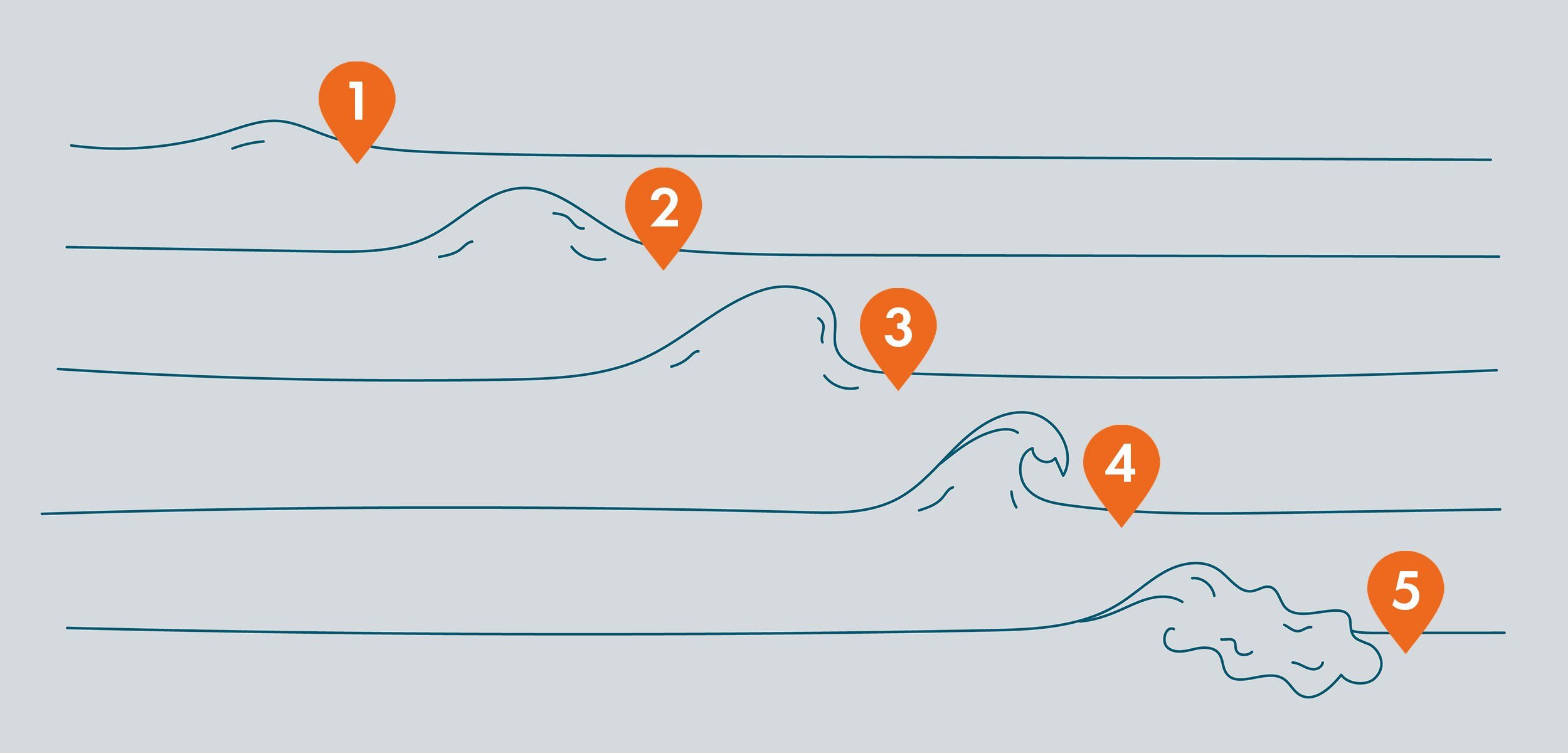How to read the stages of a wave and when to catch them
Surfing requires a combination of physical skill and environmental awareness. One of the most crucial abilities for any surfer is the art of wave reading. In this post, we'll dive into the essential techniques that will help you catch more waves and improve your overall surfing experience.
Understanding Wave Stages: The Key to Surfing Success
Wave reading is fundamental to surfing. It involves recognizing different wave stages, positioning yourself correctly, timing your paddle, catching the wave, and executing the perfect pop-up and takeoff. Like any skill, mastering wave reading takes time and practice in the water.
The diagram above illustrates the key wave stages:
Stage 1: Wave Formation
At this stage, the wave is just a lump in the water, an indication that a wave is forming, but too soon to catch.
Stage 2 and 3: Optimal Power
This is the perfect stage to catch what is known as a green wave - it is unbroken but has the right amount of power to paddle into it.
Stage 4: Breaking Wave
At this stage it is too late to catch the wave as it is already breaking, with the lip of the wave ready to crash down with a lot of power. You want to avoid being caught here - known as the impact zone.
Stage 5: Whitewater
The wave has already broken and becomes whitewater at this stage. Great for beginners to learn to surf in.
While Stages 2 and 3 offer the best conditions for catching waves, identifying Stage 1 is crucial for early positioning.
Positioning for the Perfect Wave
Once you've spotted a Stage 1 wave forming, follow these steps:
• Position yourself about 5 meters from the breaking point.
•This placement allows you to find the ideal spot as the wave progresses to Stage 2 or 3.
Remember, transitions between wave stages can happen quickly, so stay alert and ready to move.
Paddling Techniques: Timing is Everything
As you paddle to catch your wave, keep these tips in mind:
• Continuously check over your shoulder to monitor wave formation and speed.
• Adjust your paddle pace according to the wave's progression.
•Observe the wave's direction (left or right) and position yourself away from the peak and potential white water.
The Power of Observation
Developing your observational skills is key to successful wave reading. Pay attention to factors like wind direction, swell patterns, and how waves are breaking. This awareness will help you predict wave behaviour and improve your catch rate.
Catching the Wave
When you feel the wave lifting your board, get ready for action:
• Give a few more powerful paddle strokes to match the wave's speed.
• If needed, lower your head for extra momentum.
•Assume the cobra position, with hands just below your chest.
•Prepare to pop up and take off, riding the face of the wave.
Common Mistakes to Avoid
• Positioning too close to the breaking point
• Paddling too early or too late
•Failing to adjust your position as the wave approaches
Practice Makes Perfect
Mastering wave reading and positioning is a journey that requires patience and persistence. By understanding wave stages, perfecting your positioning, and by honing your paddling technique, you'll significantly improve your surfing skills. Remember, every wave is an opportunity to learn and grow as a surfer.
For more surfing and surf fitness tips follow us on instagram

